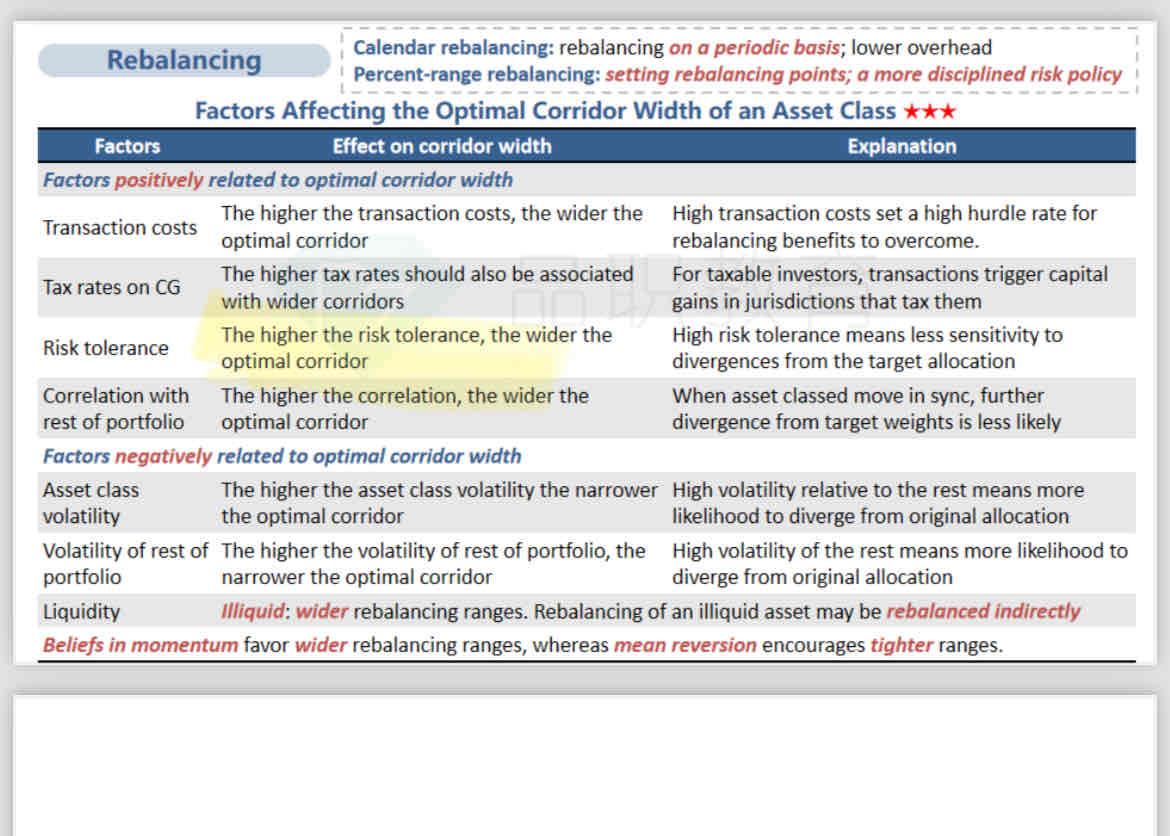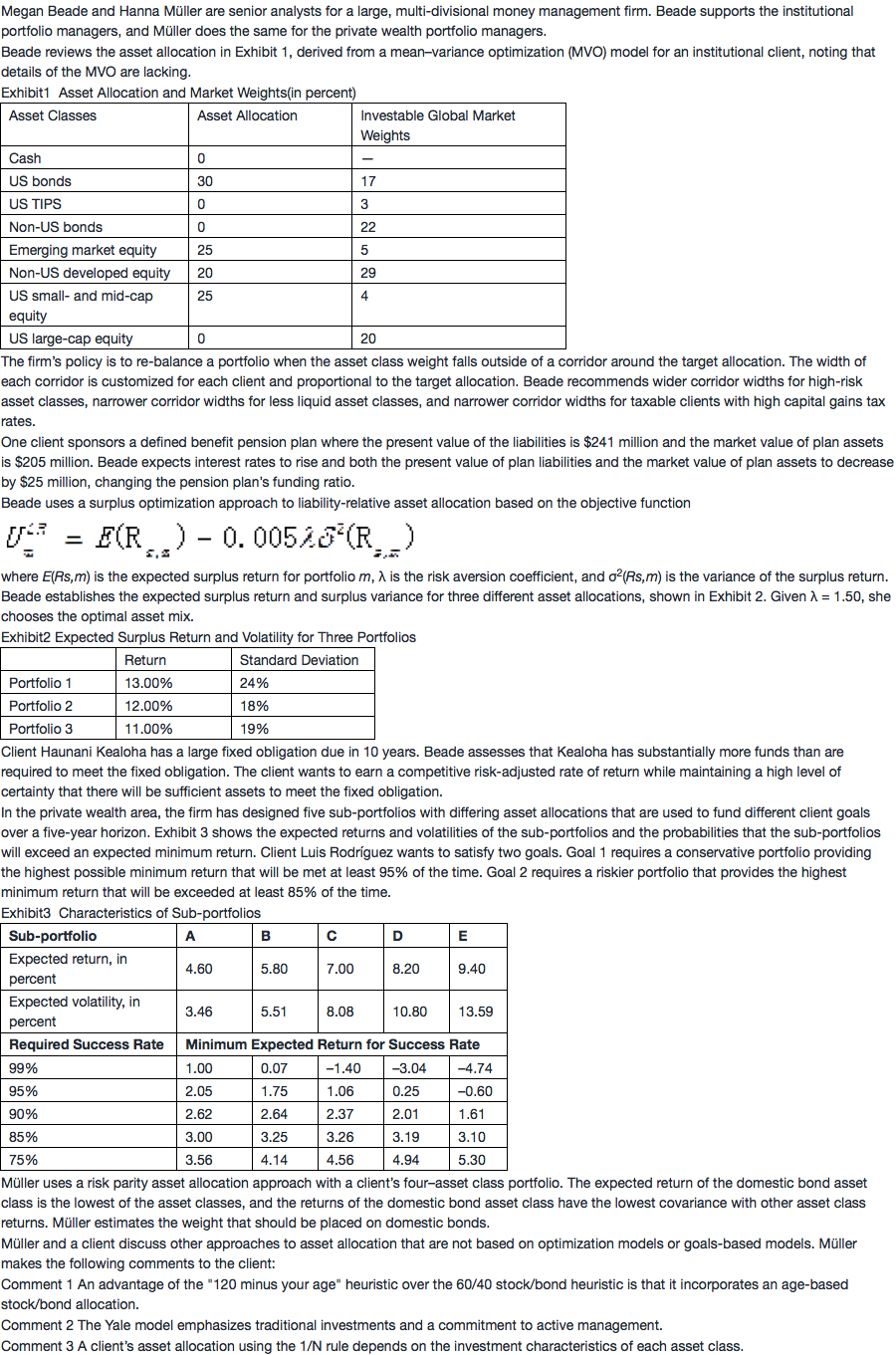NO.PZ201803130100000102
问题如下:
For clients concerned about rebalancing-related transactions costs, which of Beade’s suggested changes in the corridor width of the rebalancing policy is correct? The change with respect to
选项:
A.
high-risk asset classes.
B.
less liquid asset classes.
C.
taxable clients with high capital gains tax rates.
解释:
A is correct.
Theoretically, higher-risk assets would warrant a narrow corridor because high-risk assets are more likely to stray from the desired strategic asset allocation. However, narrow corridors will likely result in more frequent rebalancing and increased transaction costs, so in practice corridor width is often specifed to be proportionally greater the higher the asset class’s volatility. Thus, higher-risk assets should have a wider corridor to avoid frequent, costly rebalancing costs. Her other suggestions are not correct. Less-liquid asset classes should have a wider, not narrower, corridor width. Less-liquid assets should have a wider corridor to avoid frequent rebalancing costs. For taxable investors, transactions trigger capital gains in jurisdictions that tax them. For such investors, higher tax rates on capital gains should be associated with wider (not narrower) corridor widths.

根据何老师上课总结的,risk tolerence高的情况就是不需要频繁rebalance,所以corridor width wider。就算不额外考虑transaction cost的情况选项A也成立呀




